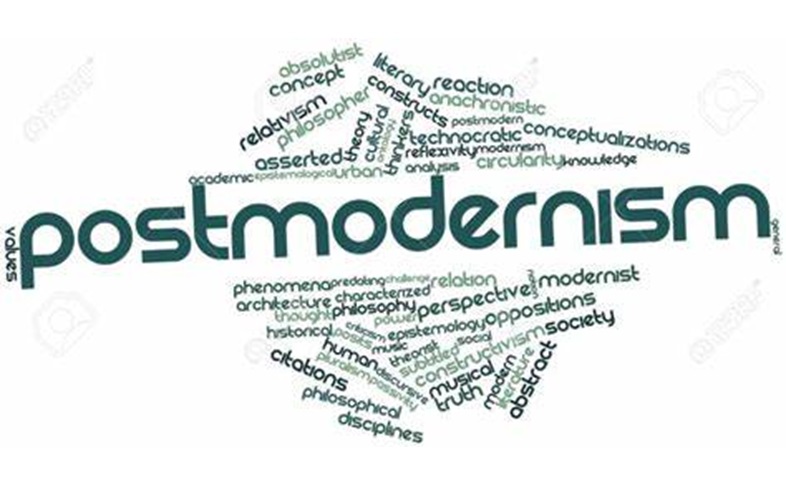First part:
“Post” means “after” and the translation of postmodernism becomes “after modernism”, but such a translation will lead us astray. For that reason, we have relied on the term postmodernism in this article. There is a lot of disagreement about the beginning of postmodernism, and some have even brought it to the Enlightenment period. Postmodernism is involved in almost all fields, although its role is strong in some fields and less noticeable in others. The presence of postmodernism in fields such as construction engineering, computer systems analysis, forestry, business, management, public relations, political science, law, public administration, and especially in the fields of literature is highly noticeable and visible (Naugle, 1992). Searching for the exact date of the beginning of postmodernism may be very difficult, if not impossible, but Arnold Toynbee (an eminent English historian) in his famous book “Review of World History” mentioned a periodization for the Western world that he favors.
In 8th and 9th volumes of his book, Toynbee has made such a division: The Dark Age (675-1075), the Middle Ages (1075-1475), the Modern Period (1475-1875) and then the Postmodern Period (Wakchaure, 2012).
It is clear that this view has many opponents, especially considering the basic point that the word postmodernism was not widespread and accepted at least until the end of World War II, and it was the 1950s when this word opened a place in literature and became common almost everywhere in the late 20th century, but Toynbee has a reason for this division, and his most important reason is that from 1875 onwards, in his opinion, the Western world fell into the trap of relativism and rationalism. (Wakchaure, 2012). The point of agreement among postmodernists is the relationship between postmodernism and modernism, but unfortunately, there is a strong disagreement about the manner of this relationship. This relationship can mean continuity, rejection, or disagreement with modernism, but in any case, you first need to understand modernism, and until this is achieved, it is not possible to understand postmodernism. Considering the point that modernism itself has multiple and even contradictory interpretations, the path becomes more difficult and if we add to this difficulty, the complexity of how to continue or reject it, on what basis and from which point of view/part. How there was/is a difference is almost impossible to discuss. However, in this article, we try to understand postmodernism, or at least get familiar with it.
From a logical point of view, its definition is to be inclusive of people and prevent others. Believing in the ability to define phenomena is based on two assumptions: completeness and certainty. Comprehensiveness itself relies on the premise that there is a clear and distinct boundary between different phenomena and that this difference is stable, in such a way that a phenomenon can be defined and limited under a specific concept. On the other hand, certainty is based on the belief that we can understand the nature of phenomena, and this is based on the assumption that human reason and wisdom can understand something relatively correctly and completely. But postmodernism has rebelled against the comprehensiveness and certainty of science. Postmodernism does not believe in the existence of a clear boundary between phenomena and prefers interference (the existence of common features between similar phenomena – what Wittgenstein called game theory). On the other hand, he considers comprehensiveness and inclusiveness to be the boast of modernism and enlightenment and unattainable, and because of the same “components”, he apparently believes in it (Hassan, 1986). In addition, postmodernism has established doubt and no longer believes in certainty. Skepticism is no longer a scientific method but, in postmodernism, it is the basis of a scientific paradigm that considers certainty, and therefore truth, unattainable and, in the opinion of most postmodernists, an illusion. Ehab Hassan, one of the most prominent postmodernists, goes as far as to say that our world is full of ambiguity and uncertainty (Hassan, 1986).
Now that we have come to the conclusion that it is not possible to define within the framework of postmodernism, what should be done? Perhaps the most appropriate way is to turn to the method brought by the postmodernists themselves; It means examining the examples and components of a phenomenon. Ehab Hassan also referred to it when he wants to define postmodernism – which he considers possible but very difficult – and listed eleven components for postmodernism. According to the reasons we mentioned earlier, it seems that it is not possible to define postmodernism in the paradigm that postmodernism created. According to this basic point, although our work and Hassan’s seem to be similar, but due to the fundamental difference in the basis as well as the goal, different examples from them will be examined in this article. In addition to particularism (holism) and fascination with uncertainty and ambiguity, other cases which are the basic components of postmodernism are introduced in turn, very briefly.











Read More
Even Iran’s Senior Team Couldn’t Overpower Afghanistan – The Fear Was Evident
The Impact of U.S. Aid Cuts to Afghanistan
The Damages of Widespread Migration of Afghans to Foreign Countries